 |
 |
 |
| |
Similar prevalence of baseline HIV-1 minority variants among responders and virologic failures, as well as increased detection of HIV-1 minority variants at treatment failure, in rilpivirine patients from the ECHO and THRIVE Phase III studies
|
| |
| |
Reported by Jules Levin
19th IAC 2012 Wash DC July 22-27
L. Rimsky,1 V. Van Eygen,1 J. Vingerhoets,1 K. Thys,1
J. Aerssens,1 M. Stevens1 and G. Picchio2
1Janssen Infectious Diseases BVBA, Beerse, Belgium;
2Janssen Research & Development, LLC, Titusville, NJ, USA

ABSTRACT
Similar prevalence of baseline HIV-1 minority variants among responders and virologic failures, as well as increased detection of HIV-1 minority variants at treatment failure, in rilpivirine patients from the ECHO and THRIVE Phase III studies (post hoc re
Presented by Laurence Rimsky (Belgium).
L. Rimsky1, V. Van Eygen1, J. Vingerhoets1, K. Thys1, J. Aerssens1, M. Stevens1, G. Picchio2
1Janssen Infectious Diseases BVBA, Beerse, Belgium, 2Janssen Research & Development LLC, Titusville, United States
Background: In the ECHO and THRIVE studies (HIV-1 treatment-naive patients), rilpivirine (RPV) 25mg qd and efavirenz (EFV) 600mg qd plus background N(t)RTIs resulted in a 78% response rate (viral load [VL] < 50 copies/mL; ITT-TLOVR) at Week 96. However, the overall incidence of virologic failure (VF) was higher for RPV-treated than for EFV-treated patients. The impact of baseline HIV-1 minority variants on and their emergence in VF to RPV was investigated.
Methods: Ultra-deep sequencing (UDS, llIumina Inc.) and Sanger population-sequencing (SPS) were performed on a representative subset of RPV VF patients (baseline and failure) and RPV responder patients. HIV-1 minority variants were defined as those with NNRTI or N(t)RTI resistance-associated mutations (RAMs) detected by UDS but not by SPS. Linkage analysis was done by matching sequence reads through positional information.
Results: At baseline (Table 1), minority variants with NNRTI RAMs were detected in 17% RPV VF-patients and 12% RPV responder-patients (p=0.57), and with N(t)RTI RAMs in 4% and 0% (p=0.24), respectively. None of the baseline NNRTI RAMs found in RPV VF patients were associated with RPV resistance.
At failure (Table 2), UDS revealed that RPV VF-patients carried a variety of additional NNRTI RAMs (including RPV RAMs) and N(t)RTI RAMs not detected by SPS. Furthermore, minority variants carrying NNRTI/N(t)RTI RAMs were identified in 4/12 (33%) RPV VF-patients with no RAMs by SPS. Linkage analysis demonstrated that in the RPV VF-patients, E138K and K101E were mutually exclusive, and E138K (or K101E) was usually linked to M184I or M184V.

Conclusions: In conclusion, the prevalence at baseline of minority variants carrying NNRTI and/or N(t)RTI RAMs was low and comparable between responders and VF patients treated with rilpivirine. Although at failure no new RPV RAMs were identified by UDS, minority variants carrying NNRTI/N(t)RTI RAMs were present in a subset of patients failing RPV without any detectable mutations by SPS.
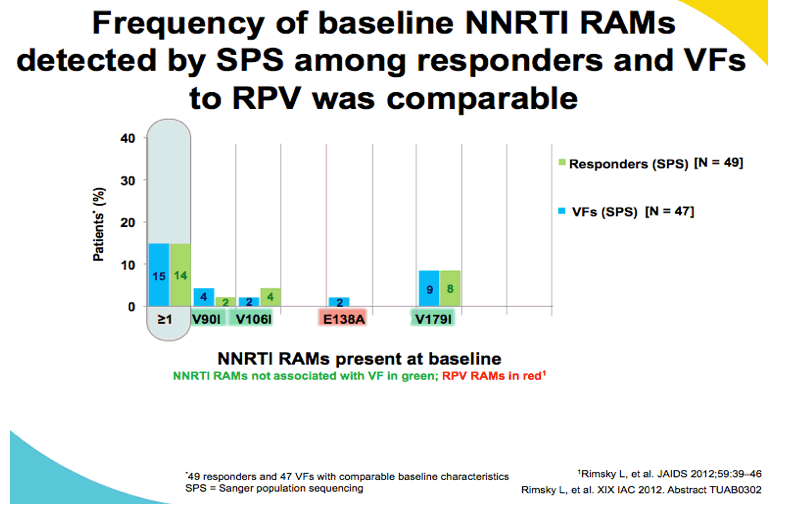
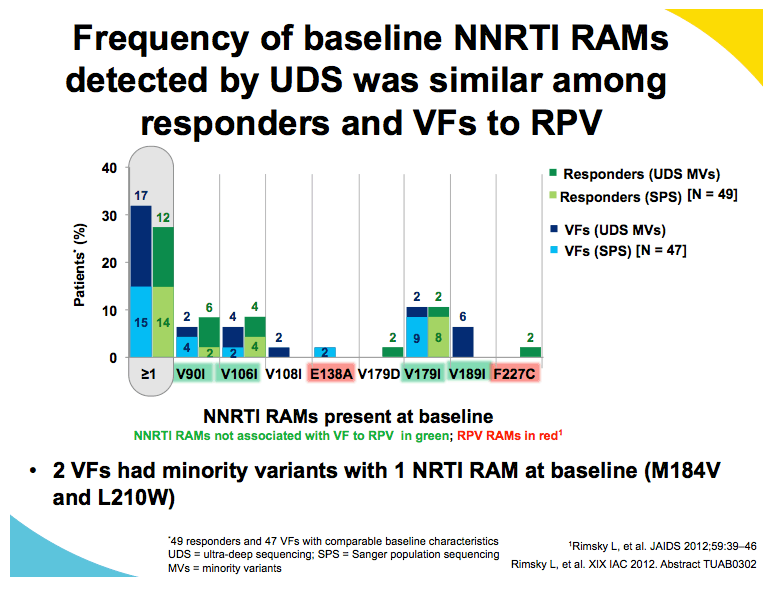

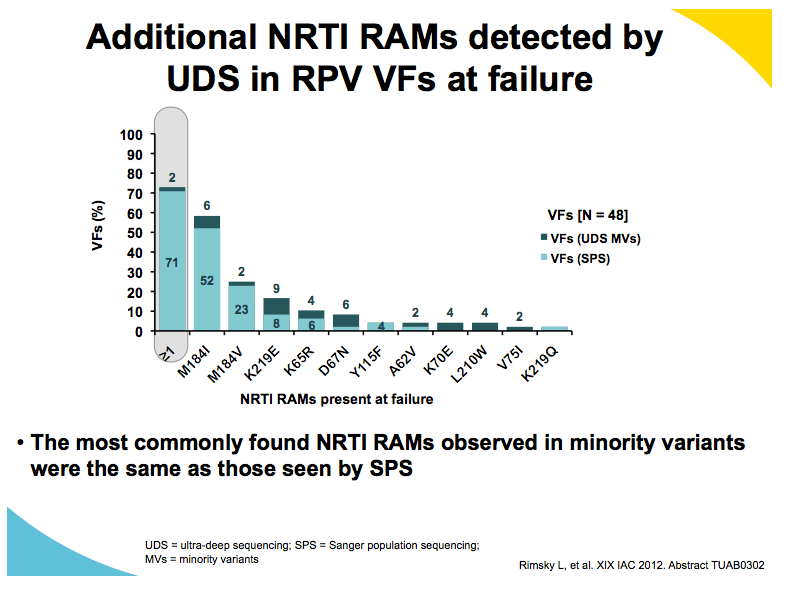
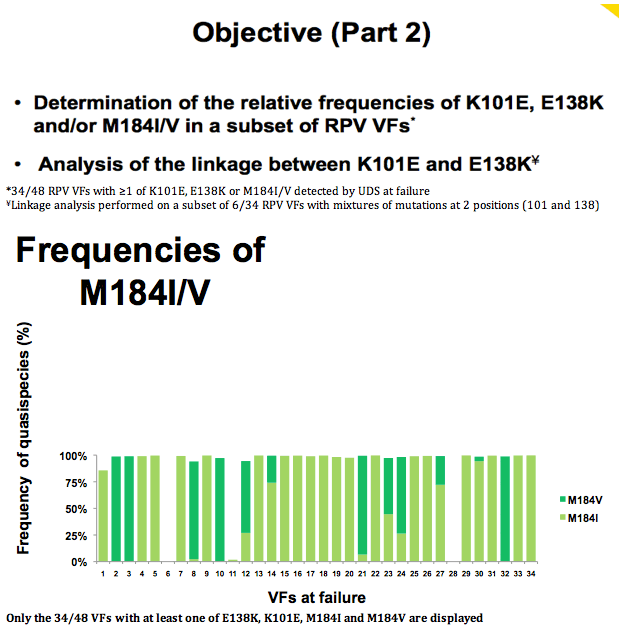
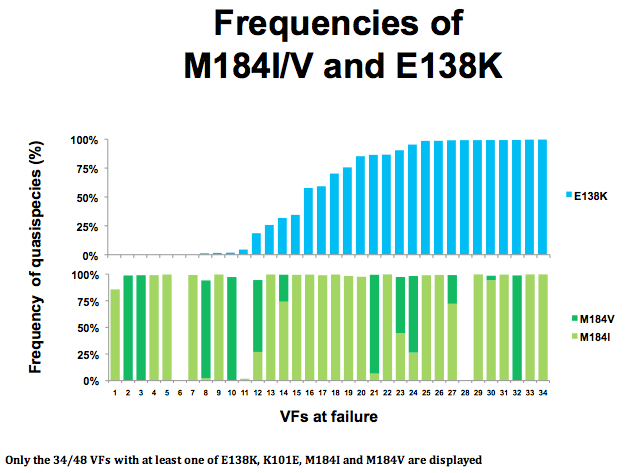
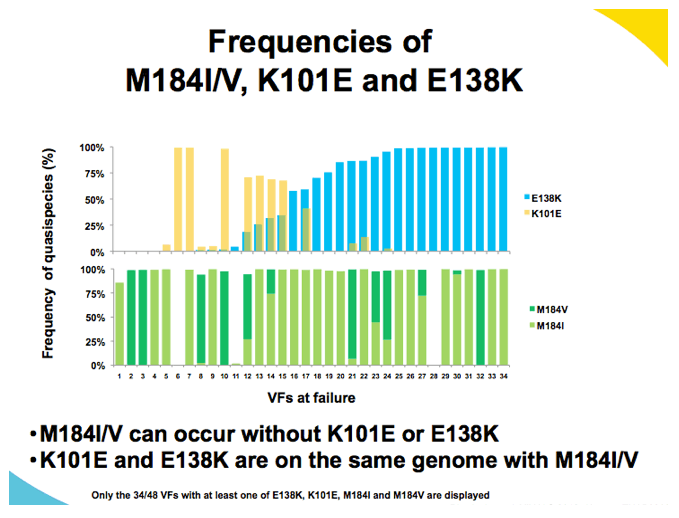
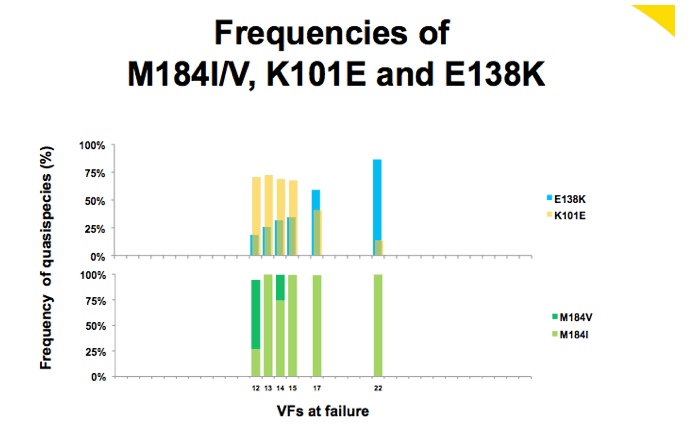
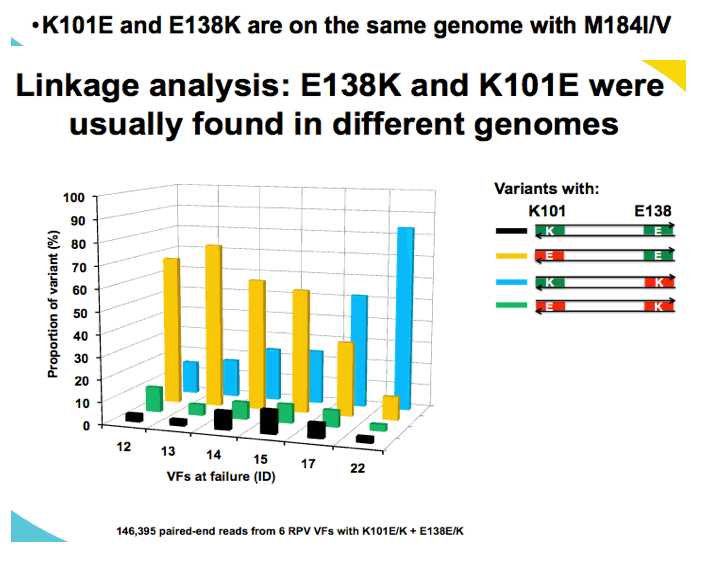
|
| |
|
 |
 |
|
|